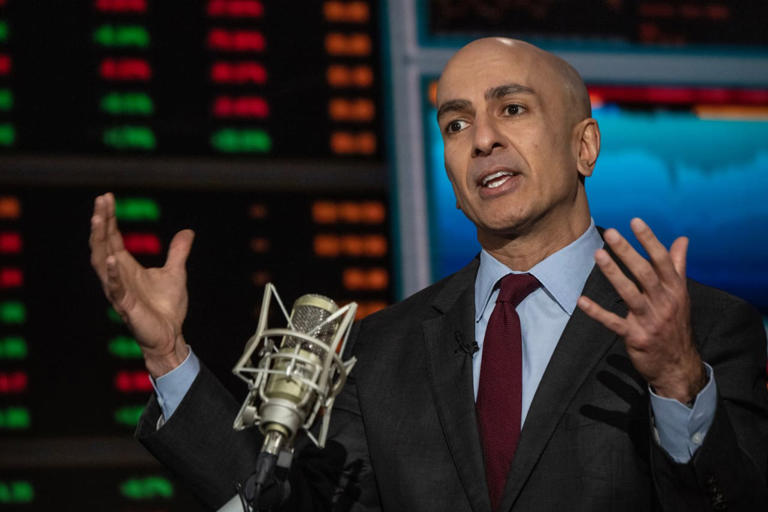Minneapolis Fed President Neel Kashkari recently discussed the persistent challenges in predicting the U.S. economy’s future trajectory and the limitations of the Federal Reserve’s dot plot tool during the 2024 Michigan Bankers Association Convention. Kashkari highlighted that, while he believes it may take a year or two to bring inflation down to the Fed’s 2% target, the unpredictability of the economy makes it difficult to provide accurate forecasts.
Kashkari pointed out that the U.S. economy continues to present unexpected developments, or “curveballs,” which complicate economic predictions. This uncertainty is not fully captured by the Federal Reserve’s dot plot, a chart that visualizes officials’ forecasts for interest rates. Kashkari expressed his dissatisfaction with the dot plot, explaining that it does not provide enough detail on the underlying considerations and uncertainties influencing policymakers’ projections. The simplicity of the dot plot forces officials to make precise forecasts that may not adequately communicate the complexities and uncertainties involved in economic forecasting.
Despite not being a current voting member of the Federal Open Market Committee (FOMC), Kashkari underscored the collective uncertainty among Fed officials about the future direction of the U.S. economy and interest rate adjustments. He emphasized that the path of interest rates largely depends on economic developments, particularly inflation trends. If inflation proves to be persistent, interest rates may need to remain higher for a longer period. Conversely, if inflation decreases more rapidly, the Fed could normalize rates more quickly.
Kashkari reflected on recent inflation trends, noting that during the latter half of the previous year, he was optimistic that inflation was on a path to returning to the Fed’s 2% target. However, progress in reducing inflation stalled in the first quarter of the current year, leaving the annual price growth slightly below 3%. As a result, he now estimates that achieving the 2% inflation target will likely take another year or two. Despite this, many Fed officials, including Chair Jerome Powell, have indicated that the central bank might cut interest rates before inflation reaches the 2% target, provided they are confident that inflation is on a sustainable downward path.
One of the challenges in managing inflation, according to Kashkari, is the remarkable resilience of the U.S. economy. He noted that the fundamentals of the economy remain strong, with an unemployment rate around 4% and businesses continuing to hire and compete for workers. Wage growth also remains robust, contributing to the overall economic resilience. Despite some indications of softening in certain areas, Kashkari remains optimistic that these positive economic trends will persist.
Kashkari’s comments highlight the difficulty in making accurate economic forecasts amidst ongoing uncertainty and the limitations of current forecasting tools like the dot plot. His remarks underscore the importance of being adaptable and responsive to new economic data and developments. While the journey to achieving the Fed’s 2% inflation target may be prolonged and fraught with challenges, the resilience of the U.S. economy provides a foundation for eventual success.
